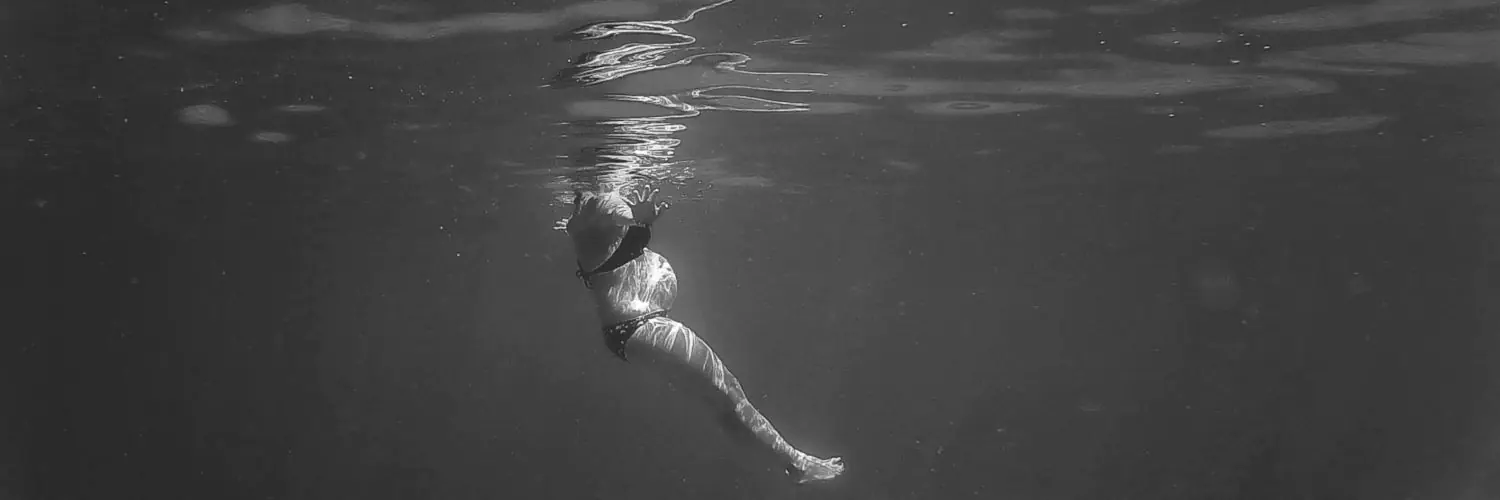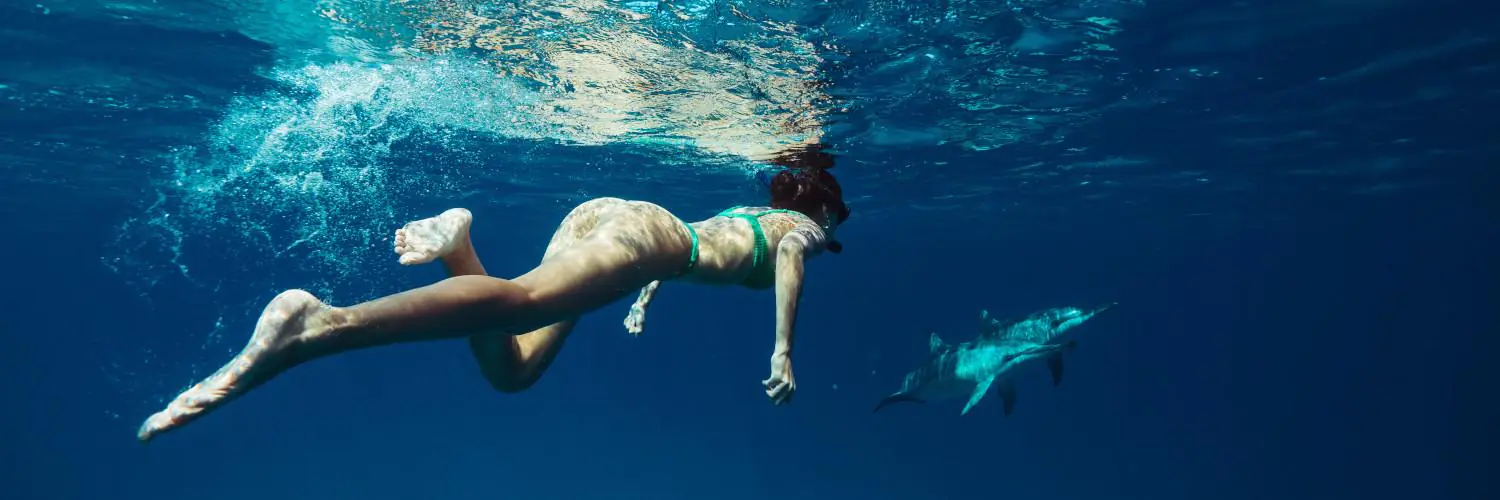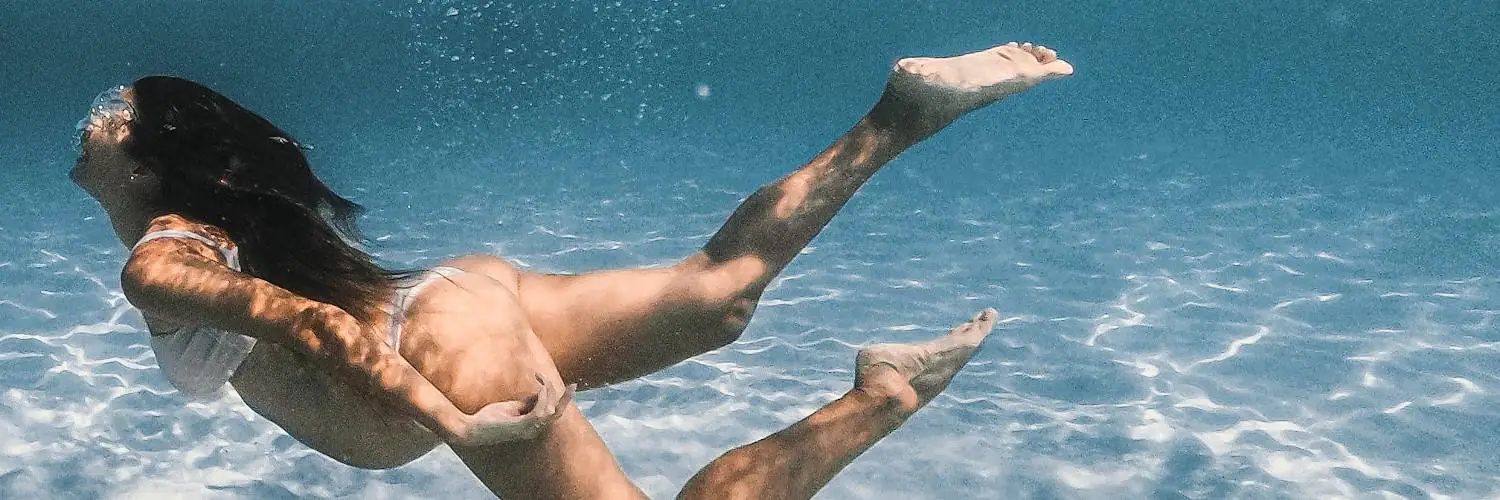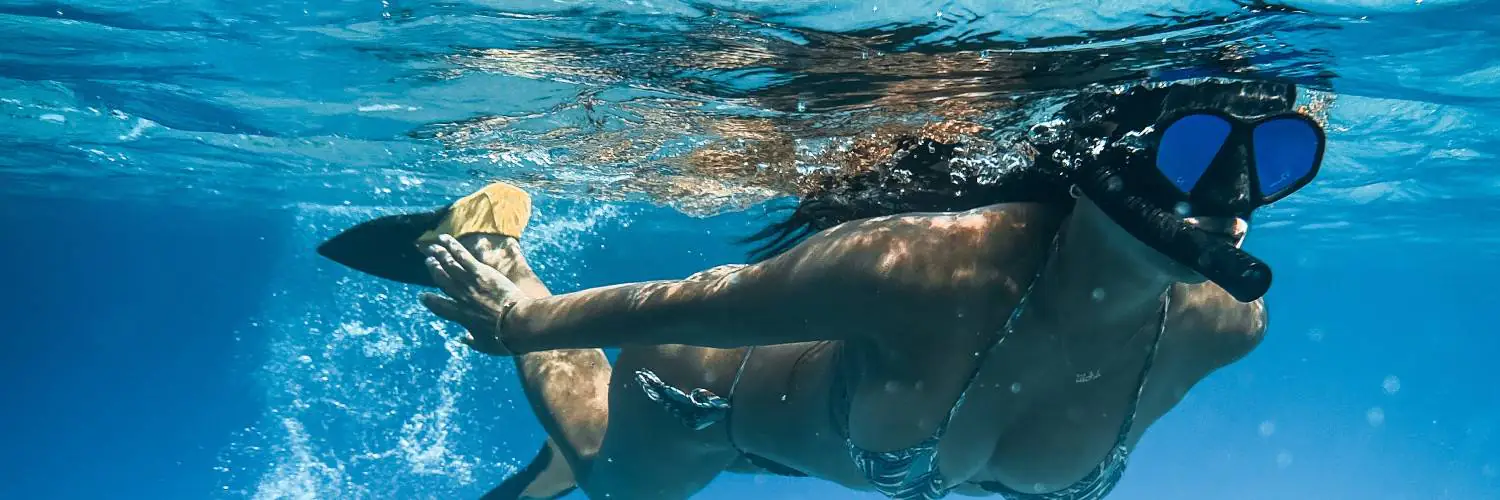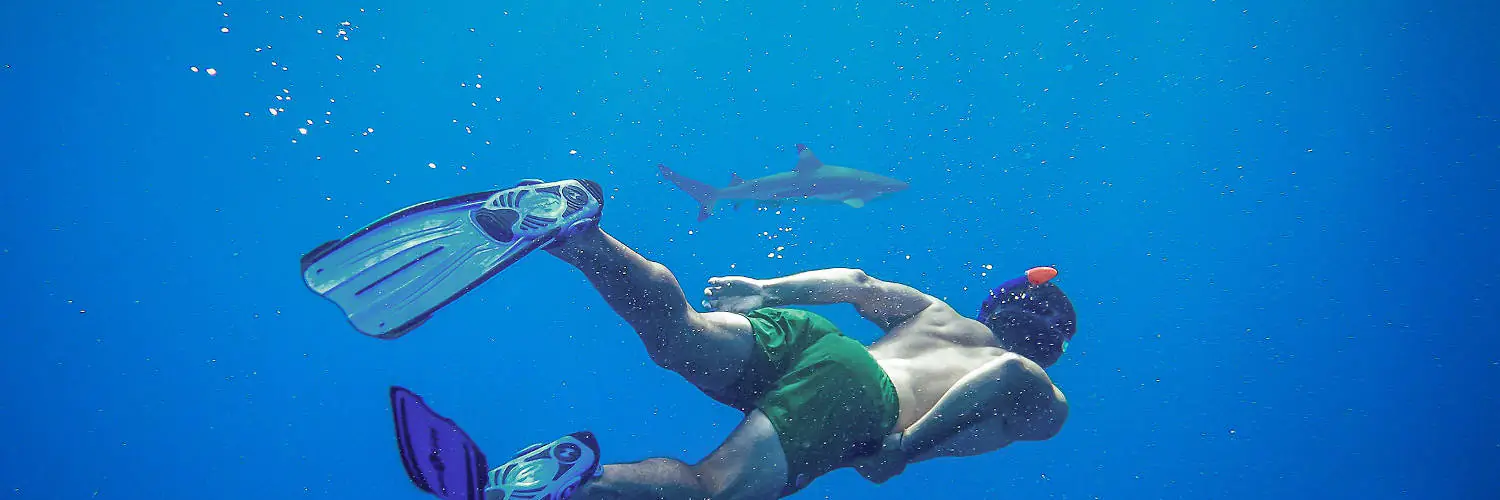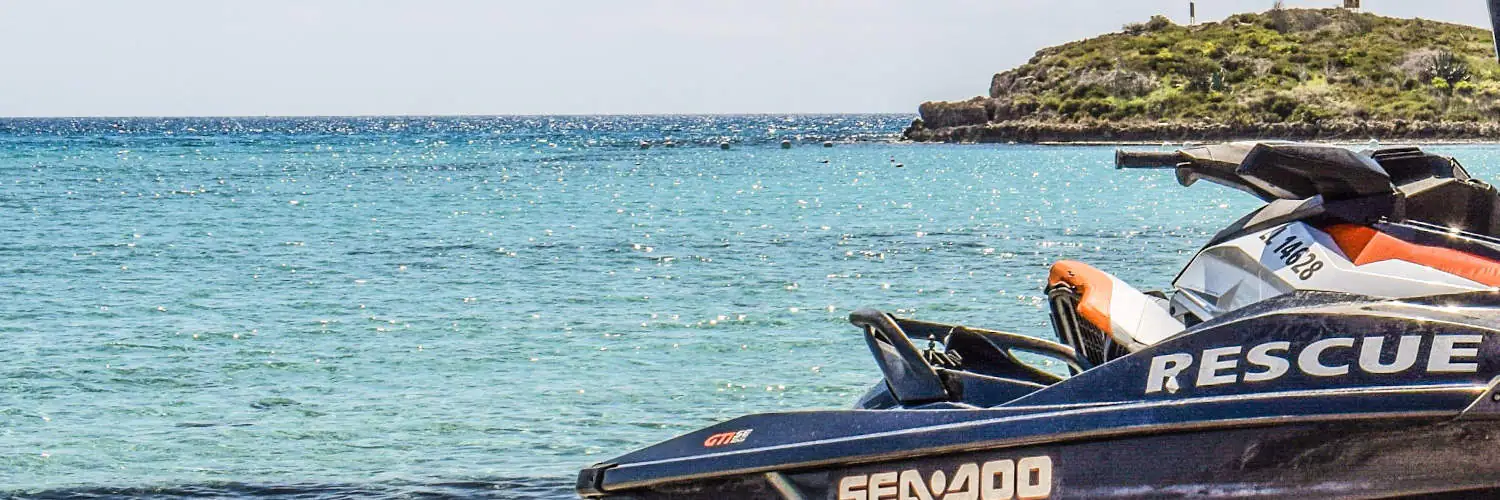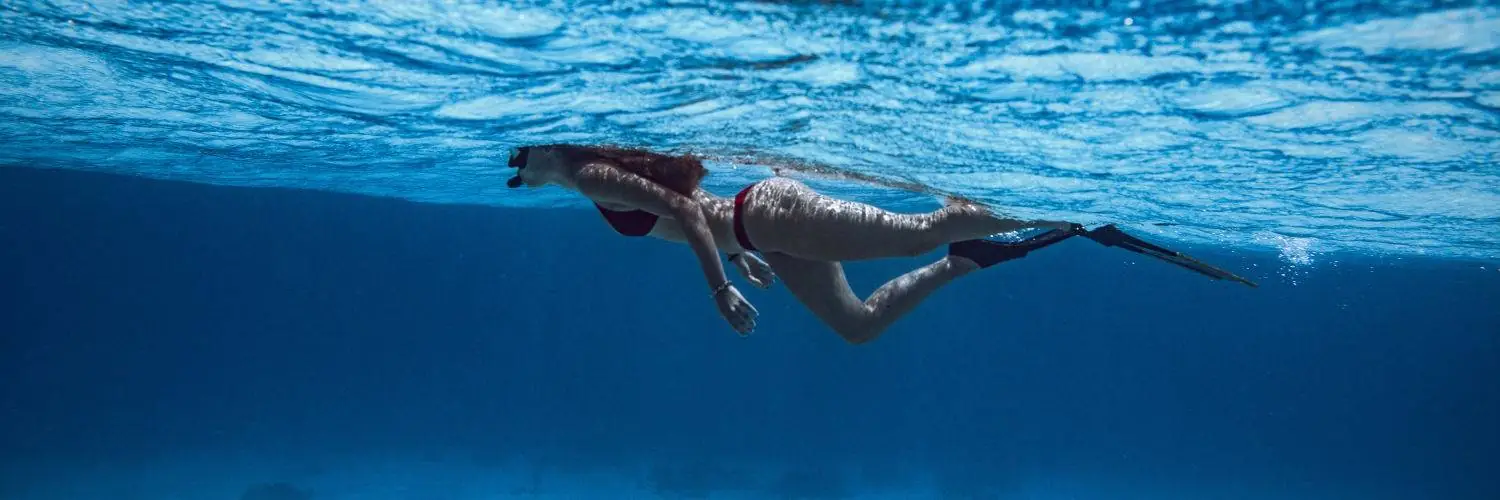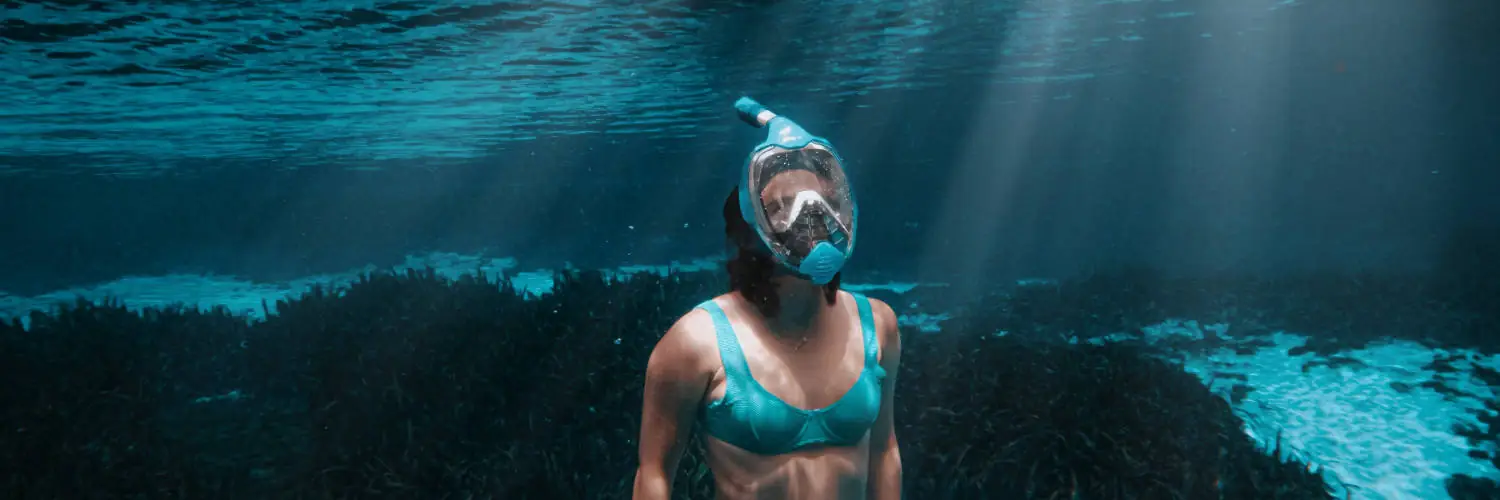Snorkeling is an accessible and popular aquatic activity that allows individuals to explore underwater worlds with minimal equipment and training. It opens up a realm of breathtaking marine life and tranquil underwater landscapes to swimmers of all levels. To ensure an effective and enjoyable experience, beginners should focus on mastering basic snorkeling skills which include proper breathing techniques, equipment handling, and safety measures.
Equipping oneself with the right gear—a well-fitting mask, a snorkel, and fins—is the first step in preparing for a snorkeling adventure. It’s essential that the mask forms a snug seal over the face to prevent water entry, and that snorkelers practice breathing through the snorkel in a controlled environment, such as a swimming pool, before venturing into open water. Understanding how to clear water from both the mask and snorkel is a fundamental skill, as is using fins efficiently to glide through the water with minimal effort.
Safety is paramount in snorkeling, and individuals should always be aware of their surroundings. They should learn to recognize and understand different weather and water conditions, as changing tides and currents can significantly impact their experience. Snorkelers are advised to always have a companion and to familiarize themselves with potential hazards in the marine environment. By adhering to these tips and focusing on the basics, snorkelers can ensure a safe and memorable journey exploring the wonders beneath the surface.
Table of Contents
Choosing the Right Equipment
The foundation of a good snorkeling experience lies in selecting the right equipment that suits the user’s needs and fits well. Quality masks, fins, and snorkels make a significant difference in comfort and performance under water.
Selecting a Proper Fitting Mask
The mask is crucial as it allows for clear vision underwater. A proper fitting mask should:
- Seal well on the face, ensuring no water enters.
- Have a silicone skirt for durability and comfort.
- Offer a wide field of vision with tempered glass for safety.
Tips for testing mask fit:
- Place the mask on the face without the strap and inhale through the nose. The mask should stay in place with the suction.
The Importance of Comfortable Fins
Fins are essential for efficient movement through the water. Snorkelers should look for fins that:
- Fit snugly but do not cause discomfort.
- Have the right length and stiffness for the user’s skill level and strength.
- Types of fins:
- Open-heel with adjustable straps, suitable for different foot sizes.
- Full-foot fins, which are worn like a shoe, ideal for warmer waters.
Understanding Different Snorkel Types
Different snorkel types cater to varying preferences and needs:
- Classic snorkels come with a simple J-shaped tube and a mouthpiece.
- Dry snorkels have a valve at the top, which prevents water from entering the snorkel tube.
- Full-face snorkels encompass the entire face, integrating the mask and snorkel, allowing natural breathing through the nose and mouth.
Factors to consider:
- Full-face snorkels are not advisable for free diving due to their larger volume and increased risk in case of emergency.
Each piece of equipment – the mask, fins, and snorkel – must be selected with consideration for fit, comfort, and the specific needs of the snorkeler. Properly choosing these items is pivotal for a rewarding snorkeling experience.
Fundamentals of Snorkeling Technique
To snorkel with ease and safety, it’s important to master the fundamentals of snorkeling technique, including how to breathe properly through a snorkel, move efficiently in the water with effective kicking, and control your buoyancy.
Breathing Basics Through a Snorkel
One must breathe slowly and deeply through their snorkel to maintain a calm rhythm. Since snorkels permit breathing with the face submerged, it’s crucial to practice breathing through the mouth only. This reduces effort and helps to conserve energy during swim sessions.
- Breathing Steps:
- Inhale slowly through the snorkel tube.
- Exhale gently, ensuring all air is expelled to prevent carbon dioxide buildup.
Effective Kicking Patterns
The key to propelling oneself smoothly through the water lies in the kicking technique. A flutter kick, similar to that used in freestyle swimming, is often efficient. To reduce effort and maximize movement:
- Kicking Technique:
- Keep legs mostly straight with a slight bend in the knees.
- Alternate kicking up and down from the hips, not the knees.
Mastering Buoyancy Control
Good buoyancy is vital for a comfortable snorkeling experience. It involves:
-
Floating Techniques: Staying afloat with minimal effort and without disturbing marine life.
-
Breath Hold: Can be used to adjust buoyancy slightly underwater.
-
The use of buoyancy control devices (BCDs) or snorkeling vests can help adjust one’s position in the water column.
-
Buoyancy Tips:
- Inhale deeply to increase buoyancy and float higher.
- Exhale to sink slightly, aiding in diving to get a closer look at underwater features.
Safety and Environmental Awareness
Prioritizing both safety and environmental responsibility ensures a rewarding snorkeling experience. Adhering to guidelines helps to protect oneself from potential hazards and preserves the delicate marine ecosystem.
Recognizing and Managing Currents and Weather Conditions
Snorkelers should check weather forecasts and seek local knowledge about prevailing currents before entering the water. Strong currents and riptides can carry individuals away from shore, while sudden weather changes may create hazardous conditions. It’s advised to stay within designated snorkeling areas, as these are often monitored by lifeguards.
- Currents: Stay parallel to the shore to avoid being swept out to sea.
- Weather: Monitor updates to avoid storms or strong winds.
Interacting Responsibly with Marine Life
One should observe marine life such as fish, sharks, and corals from a distance to minimize stress on the animals and prevent damage to the ecosystem. The use of sunscreen is encouraged, but it should be reef-safe to avoid harming marine species. Feeding marine animals is discouraged as it can alter their natural behaviors and diet.
- Marine Life Interaction:
- Fish and Sharks: Observe without touching or feeding.
- Corals: Avoid contact to prevent breakage.
Preventing Snorkeling Hazards
Proper preparation and the use of appropriate gear can prevent many common snorkeling hazards. Wearing a life jacket can enhance safety, especially for those with limited swimming capabilities. Additionally, snorkelers should be familiar with their equipment and perform a pre-snorkel safety check.
- Equipment Safety:
- Life Jackets: For buoyancy and exhaustion prevention.
- Gear Familiarity: Ensures proper fit and function.
Preparation and Practice
To ensure safety and enjoyment while snorkeling, beginners should focus on becoming comfortable in the water and building confidence through practice in controlled environments.
Getting Comfortable in Calm Waters
For novices, it’s paramount to begin in calm waters such as a swimming pool or shallow water by the beach. This initial step is crucial as it provides a safe and controlled space where one can focus on basic techniques without the stress of waves or currents. Here’s a brief guide for getting started:
- Find a quiet and shallow area: Whether it’s a pool or a still part of the ocean, ensure it’s a safe place where you can stand and breathe easily.
- Familiarize with equipment: Get to know your mask, snorkel, and fins. Ensure your mask fits snugly and practice breathing through the snorkel.
- Practice floating: Learn to float on the surface, keeping movements gentle and minimal. This will help conserve energy and maintain a relaxed state.
Building Confidence and Overcoming Fears
Gaining confidence is a gradual process that involves understanding and mitigating potential fears such as the fear of drowning or making beginner mistakes. Let’s look at the strategies for overcoming these fears:
- Breathing exercises: Learn to control your breathing. Slow, deliberate breaths through the snorkel can calm the mind and reduce anxiety.
- Skin diving: Once comfortable with floating and breathing, practice skin diving. Take a deep breath, and gently dive below the surface, which can be an exhilarating way to build confidence.
- Minimize fears: Acknowledge the fear of drowning is common, and counteract it by staying within comfortable depth ranges and knowing your limits.
- Learn from mistakes: Recognize that making mistakes is part of the learning curve. Reflect on these experiences to improve skills and avoid repeating them in the future.
Enhancing Your Snorkeling Experience
Improving one’s snorkeling experience revolves around choosing the right location, effectively engaging with the marine environment, and maintaining the gear properly. These factors are crucial for a memorable and safe exploration of the underwater realm.
Selecting Prime Locations and Conditions
Finding a good location is the first step to a remarkable snorkeling experience. Prime spots usually feature clear, tropical waters and an abundance of marine wildlife for observers. They should check the weather and ocean conditions, targeting areas with high underwater visibility for optimal viewing. Coral reefs are often preferred due to their bustling aquatic life and vibrant scenes.
- Examples of Prime Locations:
- Great Barrier Reef, Australia
- Maui, Hawaii
- Hanauma Bay, Oahu, Hawaii
Exploring the Underwater World
Once in the water, snorkelers should engage with the underwater world in a way that respects the local wildlife and ecosystem. Using a GoPro or an underwater camera can help capture breathtaking encounters with fish, corals, and other marine wildlife without disrupting their habitat. While exploring, it’s important to relax, move slowly, and avoid quick, jerky movements to not startle the sea creatures.
- Observation Tips:
- Do not touch the marine life or corals.
- Maintain a safe distance to avoid damaging the ecosystem.
Snorkeling Gear Maintenance and Etiquette
Proper maintenance of mask and snorkel is essential. To prevent fogging of the mask, snorkelers can use a defogging solution or a simple method like using baby shampoo and rinsing it off. Regular cleaning and storage of the gear help in extending its life and function. Practicing good snorkeling etiquette includes not leaving any trash behind and being mindful of others’ space in the water.
- Gear Maintenance Checklist:
- Rinse gear with fresh water after use.
- Check for wear and tear regularly.
By paying attention to these components of snorkeling, enthusiasts can ensure a safe and enjoyable adventure in the sea.
Advanced Skills and Continuous Learning
As snorkelers progress, they often seek to enhance their underwater experiences through the development of advanced skills and a deeper understanding of the marine environment. Responsible snorkelers not only improve their swimming techniques but also broaden their knowledge of marine ecology to approach the aquatic realm with greater insight and respect.
Developing Advanced Swimming Techniques
Swimming proficiency is pivotal in snorkeling, especially in more challenging environments such as strong currents in oceans or the varied conditions found in lakes and rivers. Snorkelers may benefit from specialized swimming lessons that focus on:
- Freestyle Stroke Improvement: Perfecting strokes to increase efficiency and reduce fatigue.
- Breathing Control: Mastering breath regulation for better snorkel use.
- Freediving Basics: Incorporating freediving principles to explore at greater depths safely.
By refining these techniques, snorkelers often find they can explore areas like the coral-laden tropical waters of the Maldives with increased confidence and agility.
Learning About Marine Ecology
Understanding marine ecology enriches the snorkeling experience greatly. An informed snorkeler gains a deeper appreciation for delicate ecosystems and recognizes the importance of conservation efforts. Key knowledge areas include:
- Marine Wildlife Identification: Being able to identify fish, invertebrates, and plant life adds context to each snorkel session.
- Coral Reefs’ Significance: Recognizing the role of reefs as vital habitats that anchor the ocean’s biodiversity.
- Impact of Human Activities: Awareness of how human actions, both on land and in the water, affect the marine environment.
This comprehensive ecological understanding engenders a responsible approach to interacting with the habitat, ensuring that snorkelers leave a minimal footprint and contribute positively to the ecosystems they visit.

